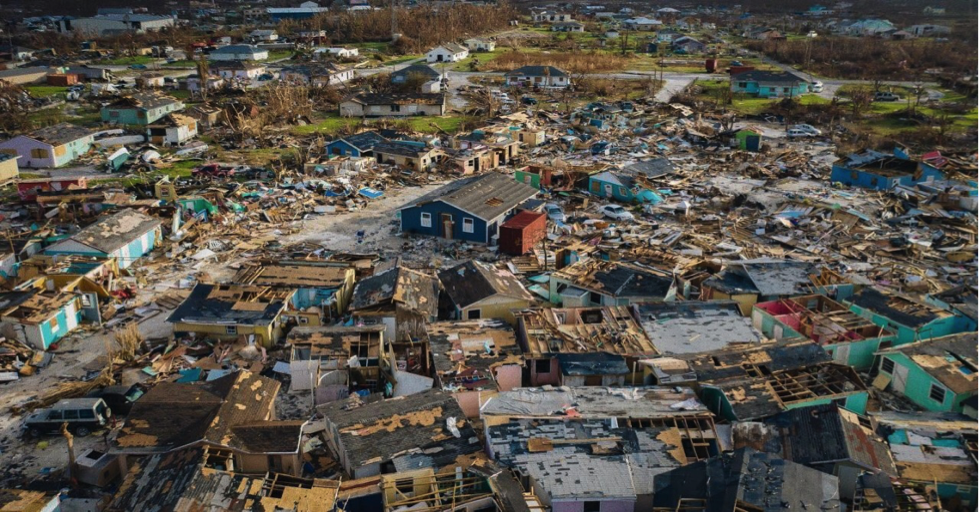The damage caused by strong winds is unique. Houses are often unroofed, causing further wall collapse. In some cases, especially with poorly constructed board houses and plate huts, the houses can be folded together with the roof on the top. Sometimes even brick- and (concrete) block walls collapse.
The waste is normally spread over wide areas of land. Streets and marketplaces can be covered with debris. When there are large amounts of boards and metal plates in the debris, there is a risk that it will be difficult to remove the debris with a conventional front loader. An excavator grappler is a more efficient tool in that case.
Other smaller items, including dust, can be spread over a huge area. This may cause serious problems if asbestos roofing material or insulation material is present in the disaster area. Ships, vessels and boats can also be affected by tropical cyclones. They may sink in the harbour, making them unusable; others are tossed ashore and destroyed. The destroyed structures and additional waste must be cleared out in order to re-establish the function of the harbour.
Tropical storms, i.e. hurricanes and typhoons, can also damage the telephone and electrical grids. Often, the distribution transformers on the poles are damaged and may be destroyed if the pole falls. In that case, greater care is necessary as the distribution transformers contain oil (in older ones, the oil might be contaminated with PCB).
